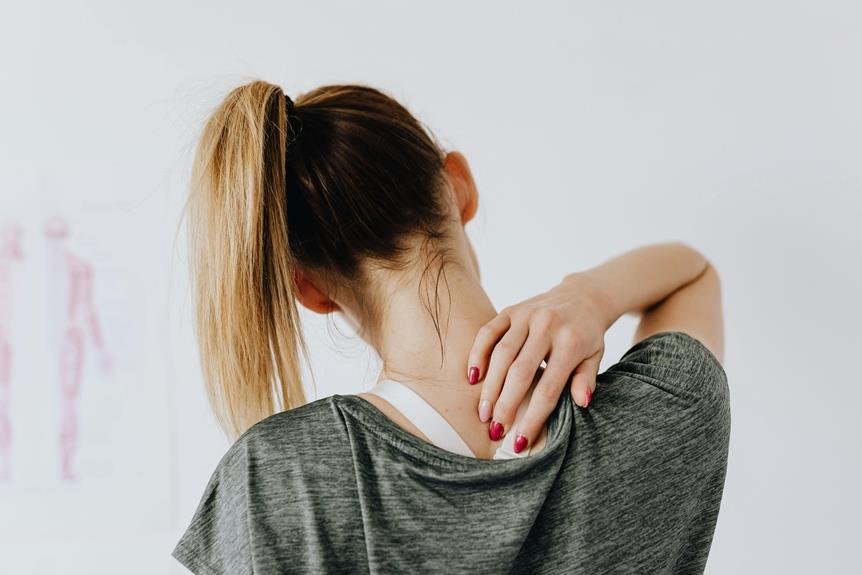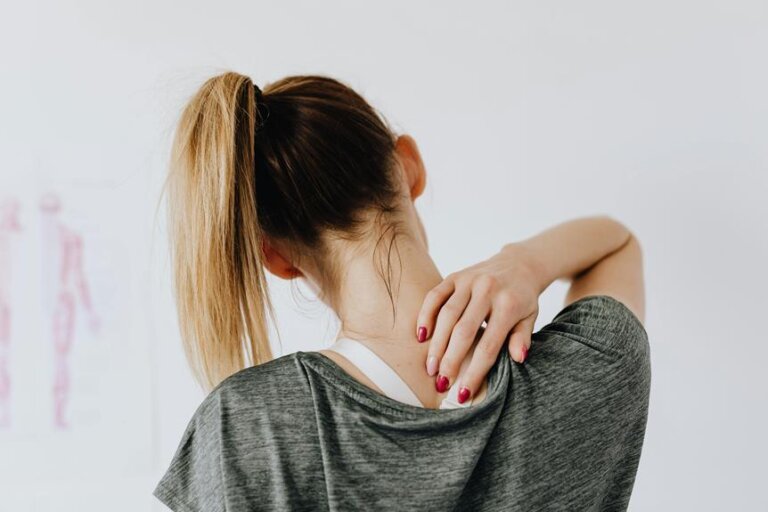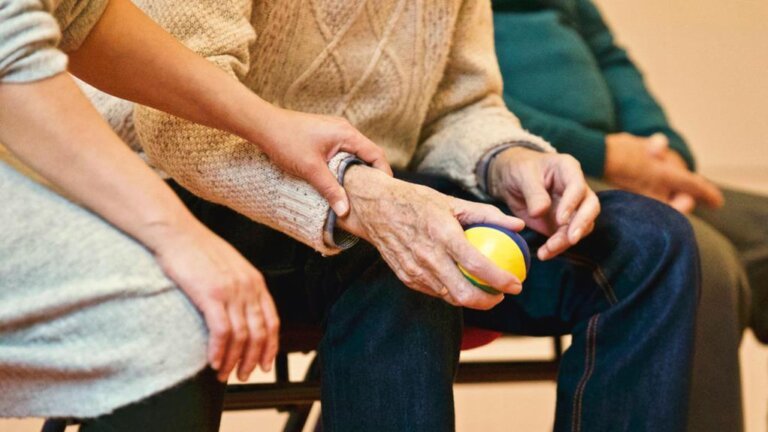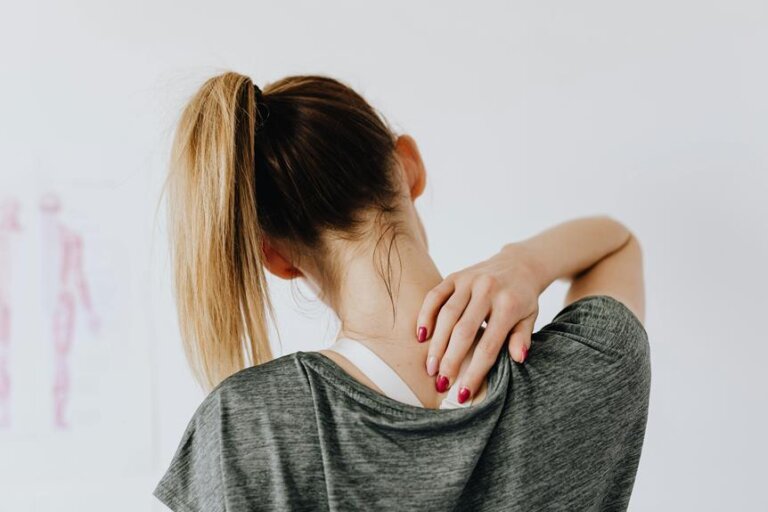Understanding Common Causes of Back Pain in the Over 50s
So, you've hit the golden age of 50 and suddenly your back seems to have a mind of its own, huh?
Well, don't be too quick to blame it on those extra candles on your birthday cake.
While age does play a role, there are other factors at play when it comes to back pain in the over 50s.
Curious to uncover the mysteries behind those aches and twinges that seem to have become your unwelcome companions?
Age-Related Degeneration of Spinal Discs
As you age, the spinal discs in your back may undergo degeneration, leading to common causes of back pain in individuals over 50. These discs act as cushions between the vertebrae, providing flexibility and absorbing shock. Over time, they can lose water content and elasticity, making them less effective in their role. As a result, the discs may begin to shrink, leading to decreased disc height and potential issues like herniated discs or bone spurs.
The degeneration of spinal discs can contribute to various forms of back pain. When the discs shrink, the space between the vertebrae narrows, putting pressure on the nerves that exit the spinal column. This pressure can cause pain, numbness, or tingling sensations that radiate down the arms or legs. Additionally, as the discs weaken, they're more susceptible to injuries and conditions that can result in discomfort and limited mobility.
Understanding the impact of age-related degeneration on spinal discs can help you take proactive steps to maintain back health as you grow older. Regular exercise, proper posture, and ergonomic adjustments in daily activities can all play a role in supporting your spine and reducing the risk of back pain associated with disc degeneration.
Loss of Muscle Mass and Strength
One common reason for back pain in individuals over 50 is the gradual loss of muscle mass and strength. As you age, your body naturally loses muscle mass, a condition known as sarcopenia. This decrease in muscle mass can lead to weaker back muscles, which affects your spine's stability and support. Weaker muscles can also result in poor posture and improper alignment of the spine, increasing the risk of back pain.
Maintaining muscle strength through regular exercise, specifically targeting the back muscles, can help alleviate back pain caused by muscle loss. Strength training exercises, such as rows, lat pulldowns, and deadlifts, can improve muscle mass and overall back strength. Incorporating aerobic activities like walking or swimming can also benefit your muscles and spine health.
To prevent further muscle loss and reduce the risk of back pain, it's essential to stay active and engage in a balanced exercise routine. Consulting with a healthcare provider or a fitness professional can help you develop a tailored exercise plan to address your specific needs and concerns.
Poor Posture and Spinal Alignment
Improving posture and spinal alignment can significantly reduce back pain in individuals over 50. Poor posture, such as slouching or hunching over, can put excessive strain on the muscles and ligaments of the back, leading to discomfort and pain. When the spine isn't properly aligned, it can also affect the surrounding structures, causing inflammation and further exacerbating the issue.
To improve your posture and spinal alignment, focus on sitting and standing up straight, keeping your shoulders back and your head in line with your spine. Avoid prolonged periods of sitting or standing in one position and make an effort to take breaks and move around regularly. Engaging in exercises that strengthen the core muscles can also help support the spine and improve overall alignment.
Osteoarthritis and Joint Changes
To understand the impact of osteoarthritis and joint changes on back pain in individuals over 50, it's essential to recognize how these conditions can contribute to discomfort and limited mobility. Osteoarthritis, a common type of arthritis, affects the joints by causing the protective cartilage between bones to break down over time. This breakdown leads to pain, stiffness, and swelling in the affected joints, which can include those in the spine. As osteoarthritis progresses, it can result in bone spurs and changes in joint shape, further exacerbating pain and reducing flexibility.
In the spine, osteoarthritis commonly affects the facet joints, which help with stability and flexibility. When these joints deteriorate, it can lead to inflammation, decreased range of motion, and discomfort, especially with movements like bending or twisting. Additionally, changes in the vertebral discs, such as loss of hydration and height, can occur with age, contributing to back pain and stiffness. Managing osteoarthritis through gentle exercises, maintaining a healthy weight, and proper posture can help alleviate some of the associated discomfort and improve overall quality of life.
Spinal Stenosis and Nerve Compression
If you're experiencing back pain in your 50s, spinal stenosis and nerve compression may be the culprits.
Spinal stenosis involves the narrowing of the spinal canal, leading to nerve compression and symptoms like numbness or weakness.
Treatment options range from conservative measures like physical therapy to more invasive procedures like surgery.
Spinal Stenosis Overview
Spinal stenosis occurs when the spinal canal narrows, leading to potential nerve compression and resulting in various symptoms. This narrowing can put pressure on the spinal cord or the nerves branching out from the compressed area, causing pain, numbness, tingling, or weakness in the back, legs, or arms.
Typically, spinal stenosis is a result of aging and degenerative changes in the spine, such as bone spurs, thickened ligaments, or herniated discs. These changes can reduce the space within the spinal canal and put undue pressure on the nerves. Understanding the underlying causes of spinal stenosis is crucial in managing symptoms and seeking appropriate treatment to alleviate discomfort and improve quality of life.
Nerve Compression Symptoms
As the spinal canal narrows due to conditions like spinal stenosis, you may experience symptoms of nerve compression, such as pain, numbness, tingling, or weakness in various parts of your body.
These symptoms can manifest differently based on the location of the compressed nerve. Pain may radiate from the lower back to the buttocks and legs in the case of sciatica, while cervical spinal stenosis can cause neck pain that spreads to the arms and hands.
Numbness and tingling sensations may occur in the affected areas, and weakness in the muscles can lead to difficulty standing or walking. Understanding these symptoms can help you identify nerve compression issues early and seek appropriate medical attention.
Treatment Options Available
When addressing spinal stenosis and nerve compression, consider various treatment options available for managing symptoms and improving quality of life.
Treatment for spinal stenosis and nerve compression often begins with conservative approaches such as physical therapy, anti-inflammatory medications, and epidural steroid injections to reduce pain and inflammation.
In some cases, surgery may be recommended to alleviate pressure on the nerves and spinal cord. Surgical procedures like laminectomy or spinal fusion can help create more space within the spinal canal and stabilize the spine.
Alternative therapies such as acupuncture, chiropractic care, and yoga may also provide relief for some individuals.
It's essential to work closely with healthcare providers to determine the most suitable treatment plan based on individual needs and preferences.
Sedentary Lifestyle and Lack of Exercise
If you spend most of your day sitting and rarely engage in physical activity, you may be contributing to your own back pain issues. A sedentary lifestyle and lack of exercise can weaken the muscles that support your spine, leading to increased pressure on the vertebrae and discs. When you don't move regularly, your joints become stiff, and your range of motion decreases. Over time, this can result in muscle imbalances, poor posture, and ultimately, back pain.
Regular exercise helps strengthen the core muscles that support your back and improve flexibility, reducing the risk of injury and discomfort. Even simple activities like walking, swimming, or gentle stretching exercises can make a significant difference in preventing or alleviating back pain. Additionally, staying active helps maintain a healthy weight, which reduces the strain on your spine.
To combat the negative effects of a sedentary lifestyle, try incorporating more movement into your daily routine. Set reminders to stand up and stretch every hour, take short walks, or consider joining a fitness class tailored to your age group and fitness level. By prioritizing physical activity, you can proactively manage your back health and reduce the likelihood of experiencing pain.
Stress and Emotional Well-Being
By neglecting to address the impact of stress and emotional well-being on your back health, you may be overlooking significant factors that contribute to discomfort and pain in your later years. Stress can manifest physically in the body, leading to muscle tension, which in turn can result in back pain. Emotional well-being plays a crucial role in how your body perceives and responds to pain. Chronic stress can exacerbate existing back issues or even lead to the development of new ones.
When you're stressed, your body releases stress hormones like cortisol, which can increase inflammation and contribute to muscle tightness. This can create a cycle where stress leads to back pain, and back pain causes more stress, perpetuating the discomfort. Additionally, emotional distress can lead to poor posture and unhealthy habits, such as overeating or lack of exercise, further impacting your back health.
To address back pain effectively, it's essential to consider not just the physical aspects but also the emotional and mental well-being. Practices like mindfulness, stress management techniques, and seeking support from mental health professionals can aid in managing stress levels and improving your overall back health.
Frequently Asked Questions
Can Back Pain in the Over 50s Be a Sign of a More Serious Underlying Condition?
Yes, back pain in the over 50s can be a sign of a more serious underlying condition. It is essential to consult a healthcare professional for proper diagnosis and treatment to address any potential issues promptly.
Are There Specific Exercises or Stretches That Can Help Alleviate Back Pain in Older Individuals?
If you're looking to ease back pain as you age, try gentle exercises like yoga or swimming. Stretching routines targeting your back muscles can also help alleviate discomfort and improve flexibility for better mobility.
How Does Menopause or Hormonal Changes in Women Contribute to Back Pain in the Over 50s?
During menopause, hormonal shifts can lead to bone density loss and muscle weakening, contributing to back pain in women over 50. Stay active, maintain a healthy weight, and consider hormone therapy under medical guidance for relief.
Are There Any Alternative Treatments or Therapies That Can Effectively Manage Back Pain in Older Adults?
If you're seeking alternative therapies for back pain, consider that studies show acupuncture can effectively manage discomfort. It's worth exploring this option to potentially alleviate your symptoms and improve your quality of life.
How Can Family Members or Caregivers Best Support Someone Experiencing Chronic Back Pain in Their 50s and Beyond?
To best support someone with chronic back pain in their 50s and beyond, listen actively, offer assistance with daily tasks, encourage gentle exercises, provide emotional support, and help them access medical care. Your empathy and presence make a difference.
Conclusion
As you journey through life, remember that your body is like a garden that needs constant care and attention. Just as weeds can overtake a neglected garden, neglecting your back health can lead to pain and discomfort.
By understanding the common causes of back pain in the over 50s, you can tend to your 'garden' and cultivate a strong, healthy spine for years to come.
Don't let the weeds of neglect choke out your vitality – nurture your back and bloom with strength and resilience.






